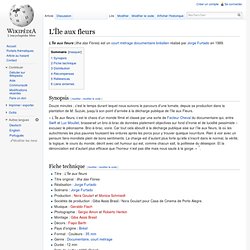

An ephemeral waste pool filled With Lights in Madrid. Art collective Luzinterruptus is all about sustainability and lights, and this simple statement reflects the basis of their philosophy: “We left our sparkles of light lit… for others to turn them off for us…” It was with this sentiment in mind that Luzinterruptus created one of their latest installations in Madrid, Spain.

Locals used to use this area in Madrid’s La Latina neighborhood for leisure until 2008, when a remodeling plan promised to turn it into a cultural center with sports facilities, a renovated public market, and a huge wooded area, rendering the existing swimming pool out of service, which it is, currently. In May of this year, rumors started to spread that the project had been modified and the place would become a shopping mall and a gourmet center that wouldn’t be affordable for the area’s current residents. Luzinterruptus. 6,000 Plastic Bottles and LEDs used to make glowing labyrinth In Poland. Spanish art collective Luzinterruptus may be anonymous, but they certainly know how to leave a memorable impression— or, at least, figure out a solution for those who happen upon thousands of plastic bottles and can't carry them all to a recycling exchange center at the local supermarket.

Last month, the crew installed a 11-foot-tall structure called Labyrinth Of Plastic Waste that's true to its name. Standing for two weeks at the Katowice Street Art Festival in Poland, the maze was made from over 6,000 discarded plastic bottles (about 85 feet of wasted), and illuminated the massive structure with autonomous LEDs. "We had been wanting to do this for some time," the artists wrote in a blog post. "We were looking to demonstrate, in a poetic manner, the amount of plastic waste that is consumed daily, in addition to focusing attention on the big business of bottling water, which leads to very serious problems in developing countries.
" See some images of Labyrinth Of Plastic Waste below: L'Île aux fleurs. Un article de Wikipédia, l'encyclopédie libre.

L'Île aux fleurs (Ilha das Flores) est un court métrage documentaire brésilien réalisé par Jorge Furtado en 1989. Man Turns Garbage Into Beautiful Tiny Homes To Shelter Homeless People. Homeless Homes Project. Cardborigami Pop-Up Shelters Create Instant Space For Homeless and Festival Crowd. Back in 2010, Tina Hovsepian introduced her innovative pop-up emergency housing, Cardborigami.

Based on origami, the recycled cardboard shelter was designed in response to the increasing homeless population in the Los Angeles area. The versatile shelters can provide a dry and private place for the homeless, and they can also double as easily transportable shelters for concerts, camping, or even relaxing in the park. Hovesepian’s origami-inspired shelter has made waves at shows like Dwell on Design, Open Borders, and the “Hobos to Street People” exhibition at the Riverside Metropolitan Museum. The shelter appeals to the homeless population, as it is easy to carry when folded down, lightweight, and virtually weather proof.
When extended, it can sleep two people comfortably. The folded cardboard prototype has inspired use beyond the initial intention of a pop-up shelter for the homeless. . + Cardborigami Via Archinect Photos © Cardborigami. Artist Transforms Trash Into Mobile Homes For Homeless. EmailEmail After realizing that all his expensive sculptures do is sit in rich people’s houses all day, California-based sculptor Gregory Kloehn decided that he should create work that was more useful and meaningful.

This is how the idea was born to build creative custom-made shelter houses for those in need. The mobile houses that he has created for the homeless so far are all different and highly imaginative. The only things they have in common are their wheels, which allow their inhabitants to move their houses wherever they want, their pitched roofs, which protect them from the rain, and their small size. Otherwise, the houses vary greatly with their many surprising design ideas. You can contribute to the project by donating the money necessary to build more of these houses.
Source: homelesshomesproject.org | Facebook | seenimages.com (via) 5.5designers reanim - 5.5 designstudio.